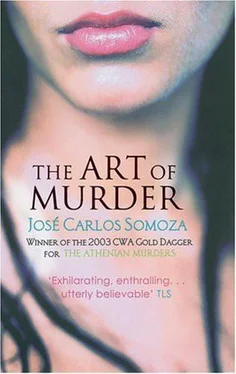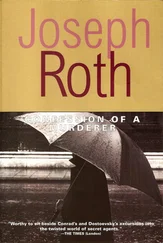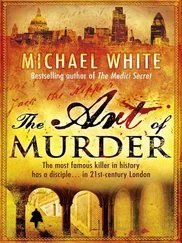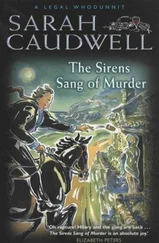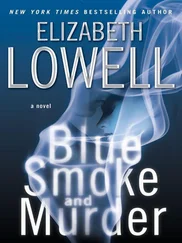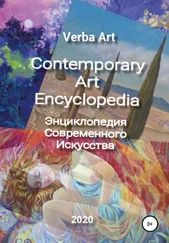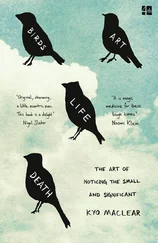Jose Somoza - Art of Murder
Здесь есть возможность читать онлайн «Jose Somoza - Art of Murder» весь текст электронной книги совершенно бесплатно (целиком полную версию без сокращений). В некоторых случаях можно слушать аудио, скачать через торрент в формате fb2 и присутствует краткое содержание. Жанр: Триллер, на английском языке. Описание произведения, (предисловие) а так же отзывы посетителей доступны на портале библиотеки ЛибКат.
- Название:Art of Murder
- Автор:
- Жанр:
- Год:неизвестен
- ISBN:нет данных
- Рейтинг книги:4 / 5. Голосов: 1
-
Избранное:Добавить в избранное
- Отзывы:
-
Ваша оценка:
- 80
- 1
- 2
- 3
- 4
- 5
Art of Murder: краткое содержание, описание и аннотация
Предлагаем к чтению аннотацию, описание, краткое содержание или предисловие (зависит от того, что написал сам автор книги «Art of Murder»). Если вы не нашли необходимую информацию о книге — напишите в комментариях, мы постараемся отыскать её.
Art of Murder — читать онлайн бесплатно полную книгу (весь текст) целиком
Ниже представлен текст книги, разбитый по страницам. Система сохранения места последней прочитанной страницы, позволяет с удобством читать онлайн бесплатно книгу «Art of Murder», без необходимости каждый раз заново искать на чём Вы остановились. Поставьте закладку, и сможете в любой момент перейти на страницу, на которой закончили чтение.
Интервал:
Закладка:
Edith Whatever-weke, resplendent in tunics and perfumes, showed them round her hovel in La Moraleja, pointing out her complete collection of HD works: painted men and women in poses in the living room, the library, on the balcony. What on earth are they doing standing there like that? Jorge wondered, fascinated by the weary beauty of their faces. What are they thinking of when we are looking at them?
Then she led them out to the garden, where the work by Vicky Lledo was on show. It's an outdoor performance,' Edith explained. 'What does that mean?' Jorge wanted to know.
'They are HD works in which the figures move and carry out actions planned by the artist,' Pedro said, adopting a professional tone. 'They are called outdoor because that's where they take place, and performance because they follow a plan and are repeated in a continuous cycle with or without the presence of the public. If they were shown like any other dramatic work and the public had to arrive at a certain time to see them, then they would be reunions.' 'So is this a kind of art-shock?' Edith and Pedro exchanged knowing smiles.
'Art-shocks, dear brother, are interactive reunions, that is, dramatic works put on at a specific time and in which the owner of the work or his friends can take part if they so wish. Most of them involve sex or violence, and are completely illegal. No, don't pull that face, Jorge, because you're not going to be that lucky today: The White Queen isn't an art-shock, it's a non-interactive performance. In other words, a work that will perform an action according to a schedule, but the public will not take part in any direct way. As innocent as can be, isn't that right, Edith?' The Belgian woman agreed with a giggle.
Jorge got ready to be bored. He had no idea of what he was about to see.
It was a big garden, protected from prying eyes by a high wall. The work was to take place on the lawn. It consisted of a roofless box with three white walls and a floor of black-and-white tiles. At ground level on the back wall, there was a rectangular opening through which the green grass could be seen. Inside the cubicle were a table, chairs, sandwiches, water and a clothes hanger, all of them painted white. A girl with a glorious mane of blonde hair, wearing a starched white wedding dress, was lying sprawled on the floor tiles. Her face and arms glowed with an ethereal brightness. All of a sudden, as Jorge was taking all this in, the work turned onto all fours, crawled over to the slit in the back wall, put her head into it, withdrew it, put it back again. All this produced a very striking image, like a surrealist film.
'See?' Edith explained. 'She wants to get out through the hole, but she can't, because her bride's dress won't let her…'
'It's a simple metaphor,' Pedro added. 'She's tired of living a bourgeois marriage.'
More fruitless attempts to push the flounces of the dress through the hole. Back again. Another push. Her waist wriggling, backside in the air, hips stuck in the frame. Looking at her, Jorge felt a stab of sympathy – he could identify with how Beatriz felt.
'Now the girl understands,' Edith went on, 'that to get out she has to take off her dress… yes, there she goes, she's taking it off and hanging it on the hanger… she's overcome her prejudices, she's stripped naked and can escape.'
She paused to speak to all her guests: 'Let's go to the other side, shall we, to see what happens next?' Jorge's brother had to prod him with his elbow. 'He's never seen a real live performance,' he laughed. 'It's good, isn't it?' Edith said, winking at him.
Jorge felt he was sleepwalking as they moved to the far end of the garden, behind the cubicle. Here there was a square patch of wet sand which was also part of the work. The girl was stretched out on it. She looked happy. The sun sparkled on her painted body like a pointillist painting by Seurat. An open-mouthed Jorge had never seen such a perfect nude. The breasts were not especially large, but they were in perfect harmony with the body and the gentle staircase of her ribcage. The gentle curve of her stomach was real, not the effort of her holding it in. He thought he could encircle her whole waist in his two hands. Her legs went on and on: it is easy to be mistaken when glancing at a pair of legs, but Jorge explored them in slow motion with a radiologist's trained gaze, and could find no fault as they stretched out endlessly like a highway. Not even feet and hands (always so difficult for a painter or for genetics to get right) sounded a jarring note: long, tapering finely, with tendons that stood out to emphasise they were alive, and nothing more. Her cultural archetypes, perfectly in tune with the ideas of beauty held at the end of the twentieth century and early in the twenty-first, were unanimous: it was a masterpiece.
But beyond the shape were the gestures Clara made: the contradictory effects produced by a face that was mischievous and disingenuous at the same time; the highlighted joint movements, and the use of muscles which in bodies like Jorge's lay dormant all their lives until finally awakened (perhaps) in death throes. It was the most harmonious composition Jorge had ever seen. The girl was rolling in the wet sand. She stood up and began a wild dance – her hair converted into a frenzy of whipcords – and then began to make a loincloth out of mulberry leaves, placing it round her sinuous waist. Throughout all this furious activity, her body gave off flashes of paint: the light, shiny colour of squeezed lemons which his brother defined as 'gamboge yellow'. In Jorge's feverish state, the word made it sound like a sacred dance. As they went back into the house for a drink before returning quickly to see what was to come next, he muttered to himself: Gamboge. Gamboge. It became an obsessive beat.
Evening was drawing in. The work had been performing for an hour and a half. As an appendix to her private bacchanal, the girl masturbated: slowly, imperiously, on her back on the sand. Jorge did not think she was pretending.
'So then,' Edith continued her commentary in her foreign, musical Spanish, 'after the ecstasy she starts to feel hungry and thirst v. Cold as well. She remembers the food, water and her dress are back in the room. So she crawls back through the slit, gets into the cubicle, eats, drinks, puts her wedding dress on again, and becomes the chaste, well-educated young woman she was at the start. It's full of meaning, isn't it?'
'A typical Vicky Lledo piece,' Pedro gave his verdict, stroking his beard. 'Women's liberation will not be complete while men keep on blackmailing them with the apparent benefits of the welfare state.'
That night, the canvas was returning to Madrid by taxi. Jorge offered to take her instead – fortunately, Pedro preferred to go on his own. Dressed in jersey, jeans and with a scarf round her neck, she seemed to him just as exciting as when she had been naked, dishevelled and glistening with sweat and sand. Her lack of eyebrows and the sheen of her skin caught his attention. She explained that she had been primed. It was the first time he had heard this expression. 'To prime means to prepare a canvas for painting,' she told him. During the journey, with his hands tight on the wheel, he asked many questions, and obtained a few answers: she was twenty-three years old (about to be twenty-four), and had been an HD model since she was sixteen. Jorge was delighted at her self-assurance, her intelligence, the way she waved her hands as she spoke, the gentle but determined edge to her voice. She told him some extraordinary things about her work. 'Don't get it wrong: the HD models are not actors: they are works of art and do everything the artists decide they should do -yes, everything, without exception. Hyperdramatism is called that precisely because it goes beyond drama. There is no make-believe. In HD art, everything is real, including the sex when there is sex, and the violence.'
Читать дальшеИнтервал:
Закладка:
Похожие книги на «Art of Murder»
Представляем Вашему вниманию похожие книги на «Art of Murder» списком для выбора. Мы отобрали схожую по названию и смыслу литературу в надежде предоставить читателям больше вариантов отыскать новые, интересные, ещё непрочитанные произведения.
Обсуждение, отзывы о книге «Art of Murder» и просто собственные мнения читателей. Оставьте ваши комментарии, напишите, что Вы думаете о произведении, его смысле или главных героях. Укажите что конкретно понравилось, а что нет, и почему Вы так считаете.
